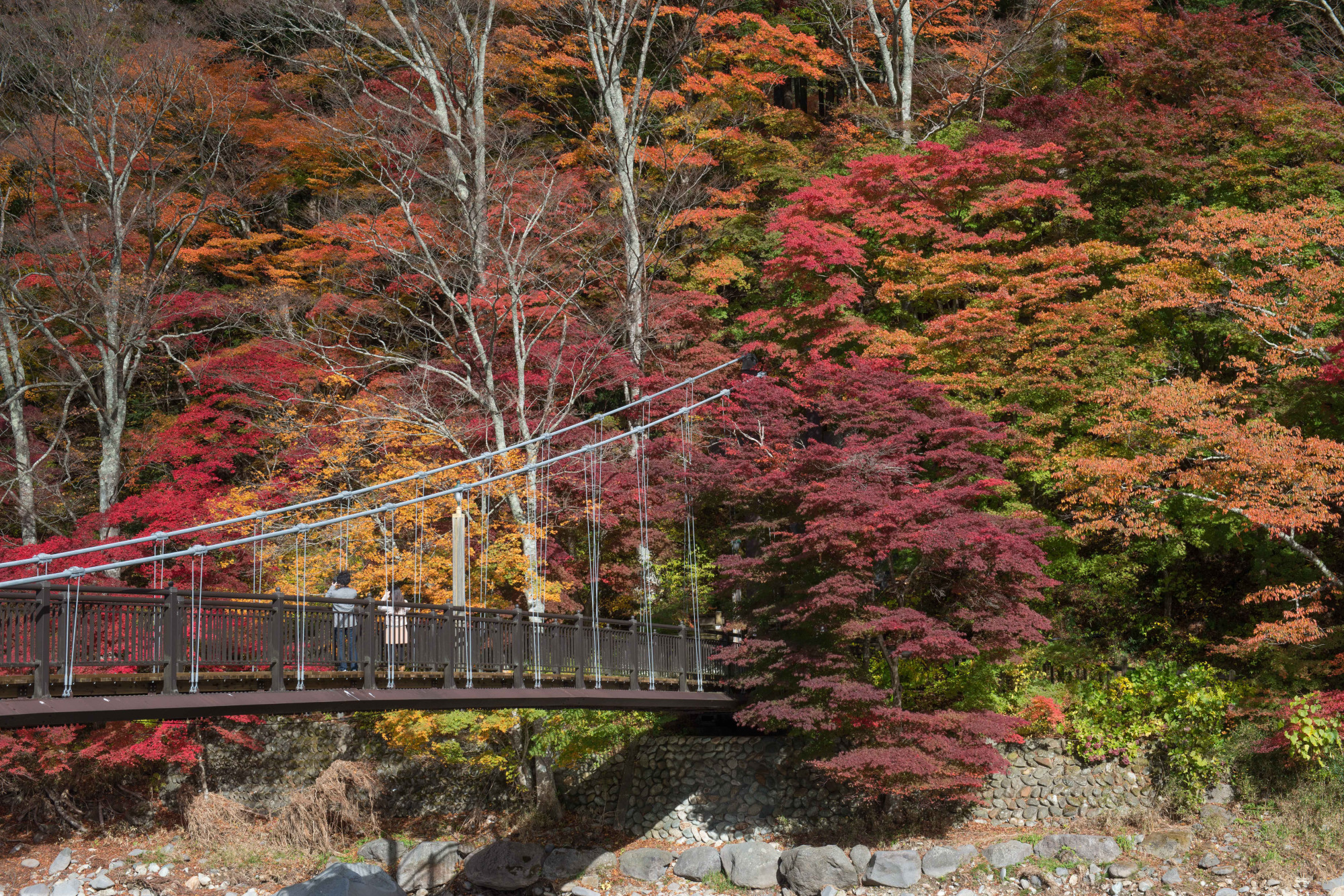Traveling into the Shiobara Valley by bus, visitors are assailed by the rich, intensely cultivated fields of Nasunogahara. The reformations that characterized Japan's Meiji Era (1868 -1912) were not confined to political or social change, the volcanic wasteland of Nasunogahara undergoing a transformation of its own in the early 1800s, as settlers from former noble families began cultivating European-style grapes here.
Most visitors will be primarily interested in the natural setting of the Shiobara Valley, but history, as the bus plunges into a river declivity saturated in greenery, is worth noting. The shogun, Minamoto no Yoritomo, is said to have come here for recreation and to hunt, while the great haiku poet, Matsuo Basho, passed through the valley at an early stage in the walk that would result in his literary masterpiece, "Oku no Hosomichi" ("The Road to the Deep North").
An area valued for its hot springs, waterfalls and hiking trails, the Hoki River acts as a useful navigator to exploring the area. A suspension bridge near Tomeharu no Taki Waterfall at the head of the hiking course, is a good place to start a roughly 4-kilometer walk along the river, a stroll that meanders under a canopy of evergreen trees. The Japanese have a word that perfectly captures the sensation of entering this refreshing, oxygenated world: "shinrinyoku," meaning, literally, "to be bathed by the forest."

















With your current subscription plan you can comment on stories. However, before writing your first comment, please create a display name in the Profile section of your subscriber account page.